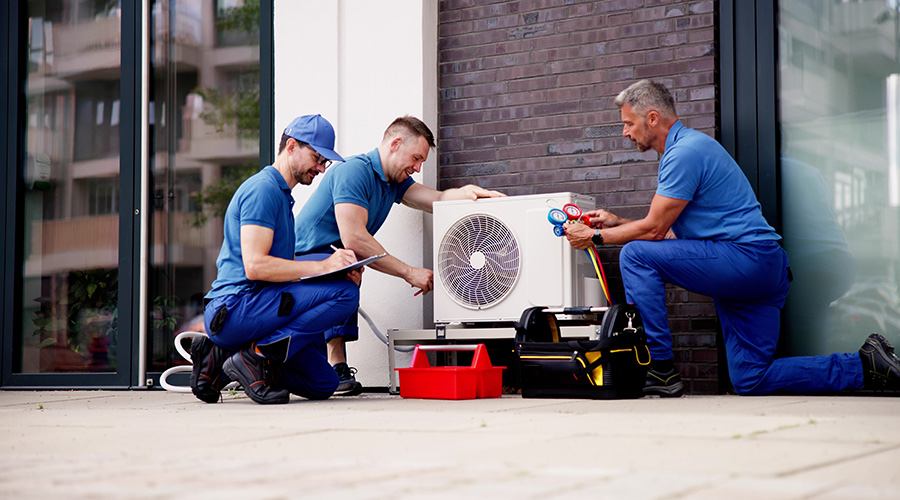Design for HVAC Accessibility and Consult the Experts
To help make smarter decisions about the life-cycle maintenance and operations costs of an HVAC project, one strategy a team can implement early is designing for accessibility. And designing that new system for maintenance should start with consultations with experts.
Human-centered design is a hot concept in the design industry; it informs the design of everything from the iPhone to the placement of light switches in a room. This same philosophy of having empathy for the end user can also guide HVAC design decisions.
For example, key HVAC maintenance points should be designed to be easily accessible. One example is the location of valves and filters. Designers are generally focused on efficiently routing duct and pipe from point A to point B and often miss where valves and filters are being placed. That means these components might be installed in inaccessible or nearly inaccessible places, or deep in the ceiling behind other building elements, where building maintenance staff will forget or ignore them. Similarly, valves for draining or access into piping need to be easily accessible. With an eye for maintenance issues, designers, with input from contractors and maintenance personnel, can easily incorporate additional valves or ductwork fittings during design.
Another example is the use of water treatment for water-based heating and cooling systems. If replacing chemicals or checking water quality is too challenging because the access point is too cramped or the process is too difficult, then the boiler or cooling tower is at risk of needing significant repair far ahead of schedule. Reactive maintenance (renovating the interior of the equipment) will be far more costly than preventive or proactive maintenance (checking and replenishing chemicals).
Owners should also consider HVAC system redundancy in the context of maintenance. Even if a building's entire heating or cooling load can be handled with a single piece of equipment, it may not be the best choice. That approach means the maintenance team responsible for keeping everyone comfortable will be less likely to completely shut down the one piece of equipment that provides comfort in order to do a full maintenance overhaul. If two smaller units together provide the full heating or cooling load, then one can be shut off for HVAC maintenance during times of low demand.
There are a number of steps that make it easier to design HVAC systems for maintenance. One of the key tips is to ask the experts. It's difficult to make informed long-term decisions without the right data, including both annual maintenance costs and expected replacement costs. The best place to get this information is from a service contractor.
Many design teams will partner with a contractor to assist with the pricing of the HVAC systems, but that provides only limited information. The best approach is to go one step further and consult with an HVAC service contractor to establish the cost of preventive maintenance and planned replacement of key equipment/parts based on the contractor's on-the-ground experience. Service contractors can provide more insight than the typical manufacturer's recommendations since they deal with the HVAC equipment every day and know how to best manage it over time. With this information, the team can budget a maintenance plan that will help estimate the yearly and significant maintenance costs over the lifespan of the equipment.
Related Topics:













